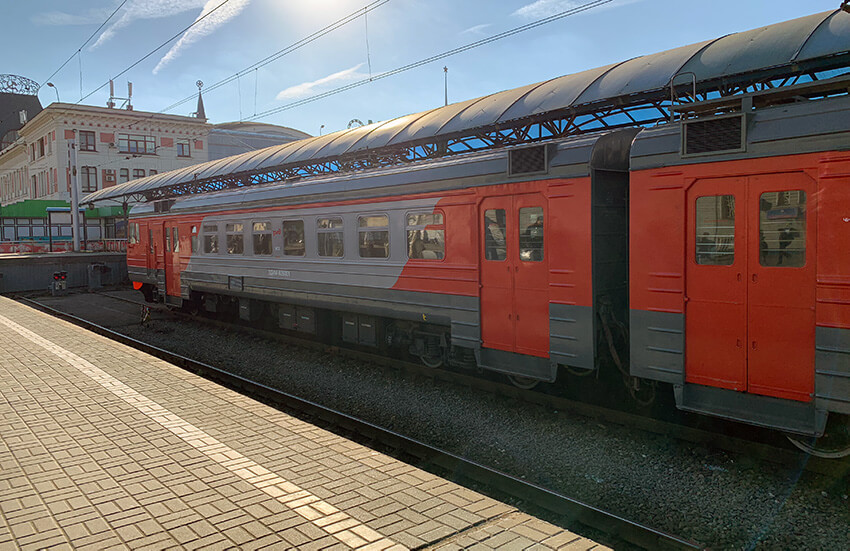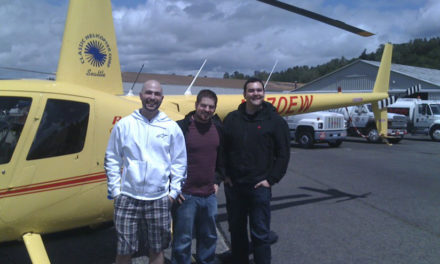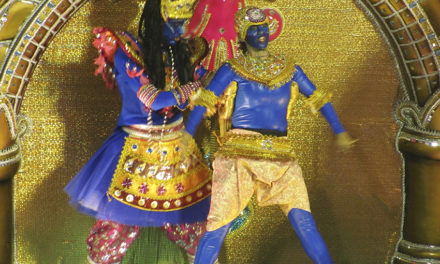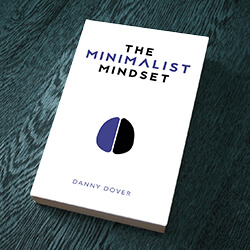I am very clearly in a new chapter of my life. My Life List is behind me, and after an uncomfortable year and a half in the space in-between, I am now fully engaged in creating the new unwritten path ahead of me. My clothes have changed (t-shirts changed to flannels), my lifestyle has changed (my girlfriend is now a core part of my life) and my daily focus has improved (my projects are for others rather than myself). In many ways, I am a permanently improved man.
To mark this change, my girlfriend and I embarked on an adventurist escapade together. I’ve had a bitter / sweet relationship with Russia, so I wasn’t planning to return, but when a special friend, Nancy, invited us to join her on the Trans-Siberian Railway, we couldn’t turn down the call to adventure.
The Trans-Siberian Railway crosses the entirety of Asia. It starts in St. Petersburg, climbs the Ural mountains, travels through the massive Gobi desert and slogs through the Siberian tundra before ending on the Eastern shore of remote Russia. It is the longest and most remote continual train ride in the world.
While you can make the whole trip in one go, my travel companions and I opted to break the ridiculously long trip up and modify the route to keep it novel. We did the Trans-Mongolian version of the journey (red then orange lines in the image below) which takes you essentially the same length but detours into Mongolia and China. After hearing multiple accounts of people who have done the traditional route, and having completed the Mongolian route myself, I highly suggest you opt for Mongolian route to keep the adventure fire lit.
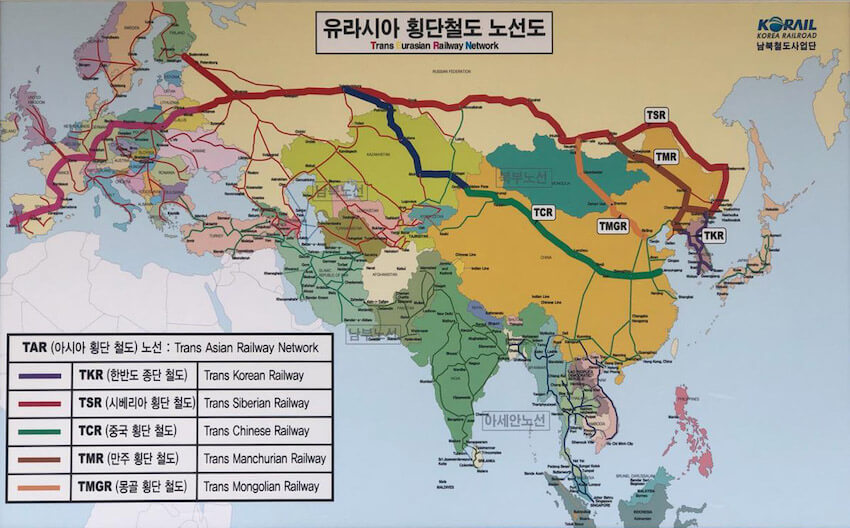
To keep the trip interesting, we replaced the last third of the red line (Trans-Siberian railway) with the orange line (Trans-Mongolian railway)
The East to West route of the Trans-Siberian starts in Moscow and labors its way for five days through the rural lands of Western Russia before passing south of Lake Baikal. Our second class cabin was small but quaint, heated to nearly 85 degrees F (~29 C) for most of the day and showerless. We had access to a hot water heater, so most of our meals were freeze-dried noodles and smuggled in vodka. Happily, we were the only Americans on the train and only about a dozen of the other occupants spoke English. Even still, we found ourselves in a welcoming community. At one moment on day three, my nose started to bleed from the hot, humidity-less air. I mentioned this to my girlfriend and overhearing this, a fellow passenger in the hallway relayed “my condition” to the next cabin. My girlfriend and I smiled, me bloody-faced, as we heard the news travel quickly at a decreasing volume down the length of the train in various languages.
We were way out of our element, and we were absolutely loving the experience.
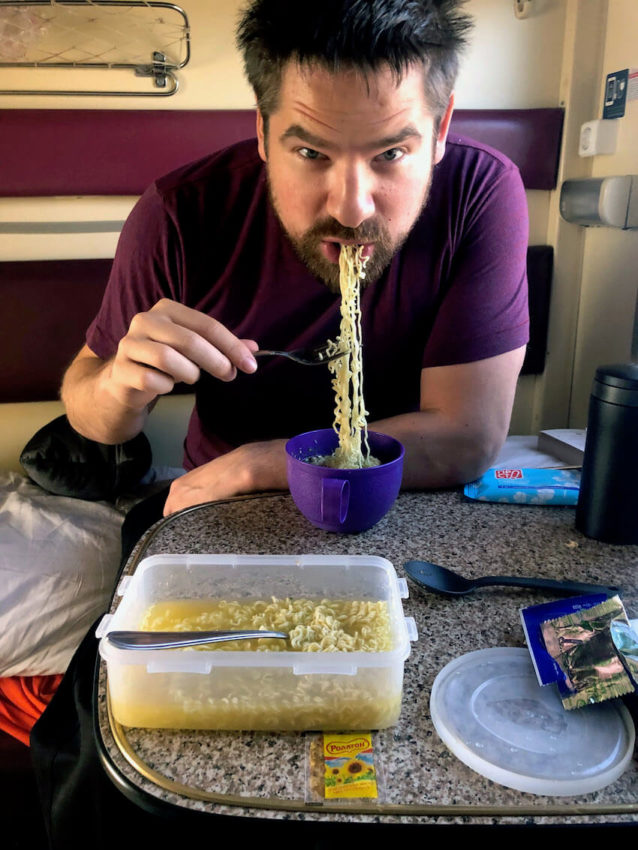
Day 5: I may not be a looker but I can eat noodles like a champion!
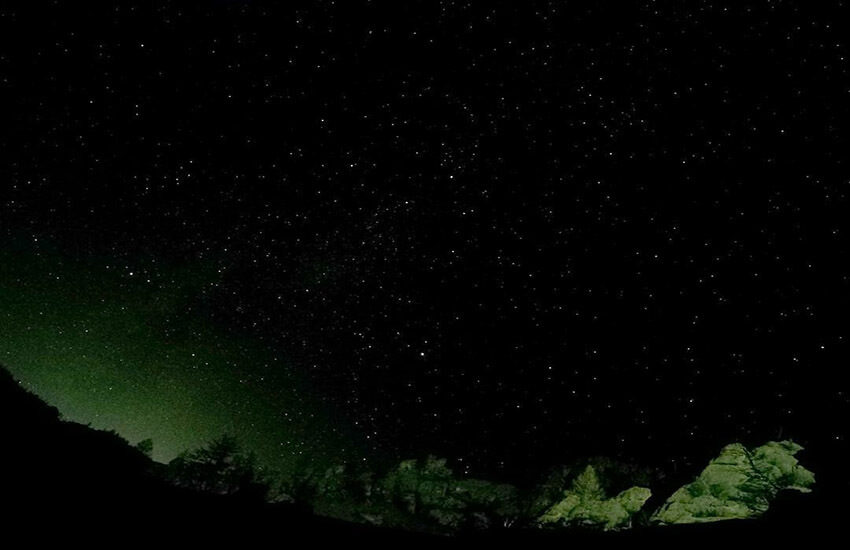
The night sky and utter remoteness. Photo credit: Hilary
Each 24 hour period on the train had approximately the same shape. At night there was very little artificial light outside, so the train traveled through the remote environment in nearly complete darkness. The train gently rocked us to sleep and our rooms, although overly heated by American tastes, were cozy and oddly comforting. We’d wake up without an alarm whenever we felt the craving for a “just add water” oatmeal breakfast. The hallway outside our cabin acted as a kind of entertainment device where people would pop their heads into our booth and update us on anything that had happened the night before. We routinely sat in our tiny beds facing the hallway and “flipped channels” as different people popped in and out of our cabin to tell us a story or to offer us something unfamiliar to eat or drink.
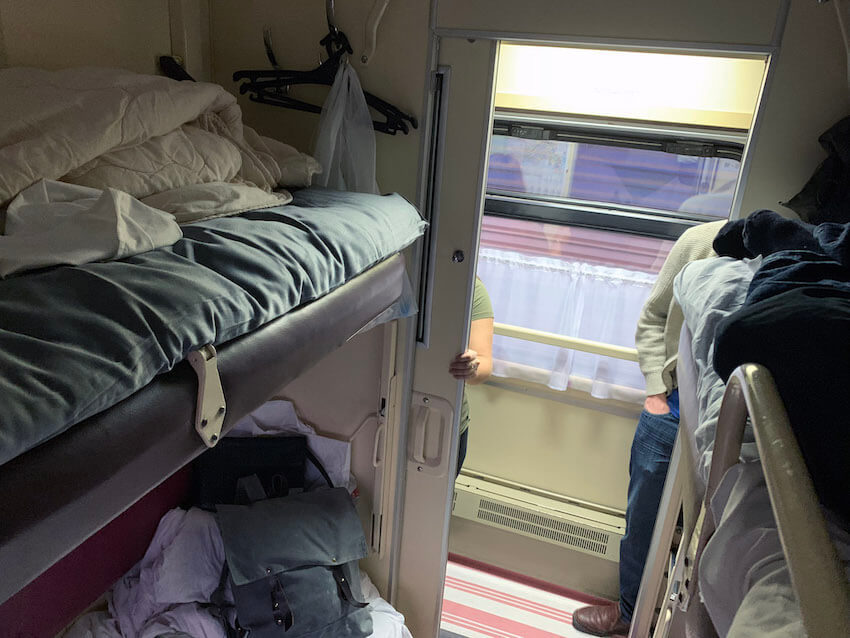
The cabin was quaint but cozy. People in the hallway provided us with all of the entertainment that we needed.
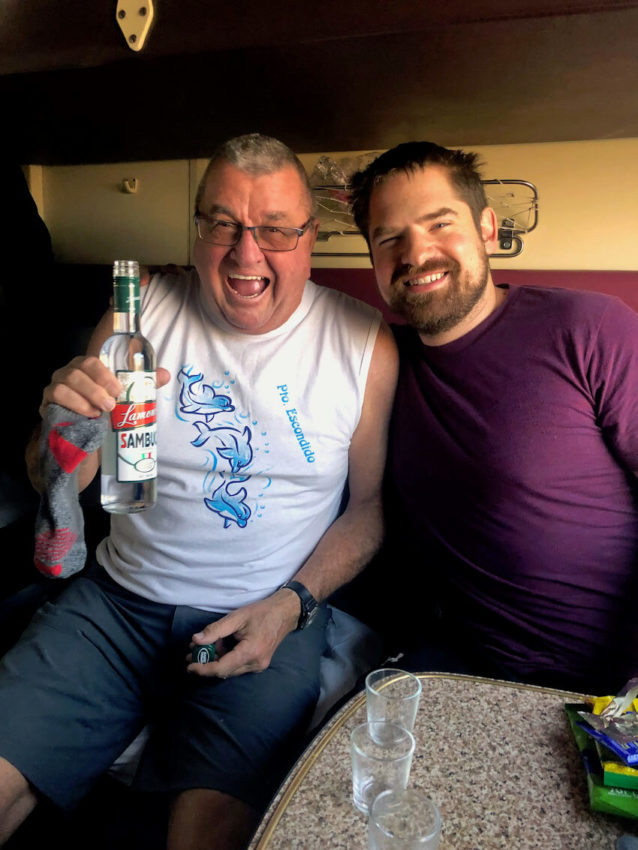
Someone may have smuggled liquor aboard in a giant sock…
Life on the train was like living in a time warp. Time was hopelessly skewed as the sun’s position was useless for signaling our bodies’ internal clocks, and external clocks were useless given that we traveled through multiple time zones every day. I found this to be great and ended up entirely opting out of time. I carried no clock, and I ate and slept whenever I pleased.
We had no control over the schedule of the train, so we just rode along and stepped outside for mini-stops whenever the train conductor led us to a small remote town. New tiny experiences were brought forth every time we looked out the window or stepped off the train.

The sandwich I ordered in the dining car was not what I expected… It only had one piece of bread :-)
Throughout my travels over the past ten years, I’ve flown the equivalent of nearly 50 times around the planet, road tripped four times across the length of the United States, and crossed some of the most exciting seas in the world by ship. After this train trip though, I can now confidently say that traveling by train is the most wonderful form of transport.
Airplanes are a relatively fast and inexpensive way to get from point A to point B quickly, but for all but the most luxurious options, the passenger is condemned to hours in a less than ideal seat in an unpleasant environment. Traveling by ship requires good spirits, a defense against seasickness and forced sociability. Cars and buses offer boundless options but at the expense of sleep quality and carefreeness. Sleeper cars in trains, on the other hand, stand alone.
In all of my adventures, I have never felt as free as I did on this train.
Sitting alone in the dining car, my stomach full of a partial sandwich, vodka, and beer, I sat for hours looking out the window. Being far out of cell service and thousands of miles away from my responsibilities, I was delightfully free.
I could walk between cabins whenever I wanted, lay down and read a book as I pleased, breathe full breaths of fresh air easily, and order food on-demand.
As I traveled through a particularly remote section of the Gobi desert, my view of nothingness was pristine. This pleasant time of sweet freedom lasted uninterrupted for hours. It was as if I had found a magical pause button on life. I relished the tranquility.
In my normal life, I spend most of my waking hours strategizing various plans and weighing available options. Professionally I am employed to proactively solve other people’s problems by using critical thinking and learnings from my own past experiences. In my personal life, I use the same tools and a lot of mental effort to try to carve out and craft the life that I crave.
While most of the time I am essentially blind on my path toward what I hope is roughly the right direction in life, every once in a while I stumble upon a moment of certainty in an otherwise vast universe of randomness. Adventures like my time on the train are a rare glimpse of a figurative lighthouse that reassures me that I am on the right path. These moments remind me at a visceral level that when adventure calls, the right move is to answer it favorably and fondly.

